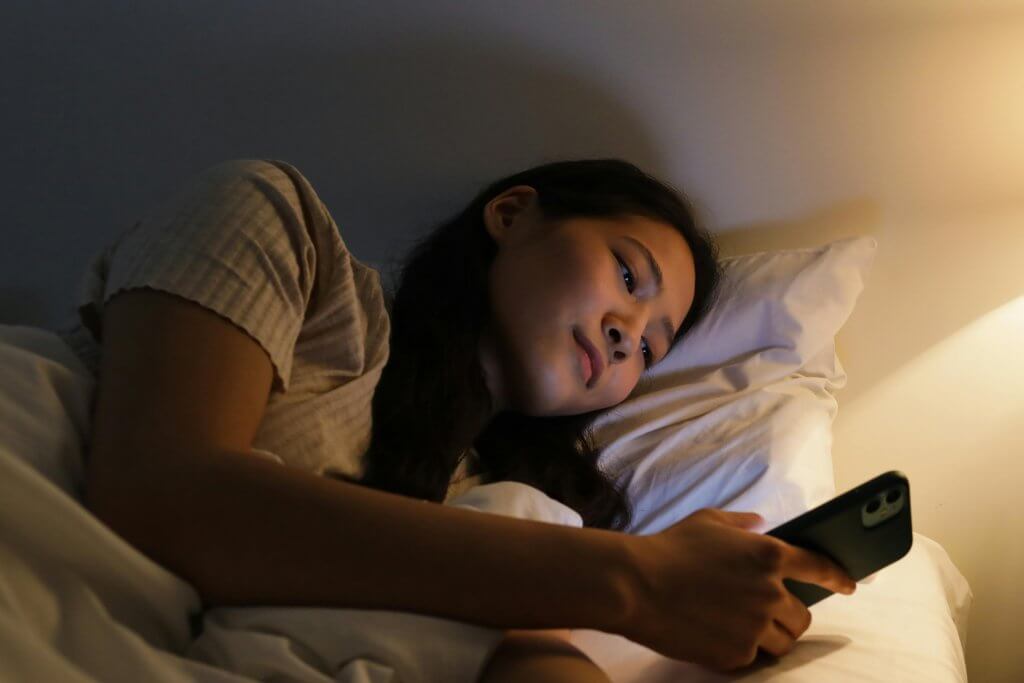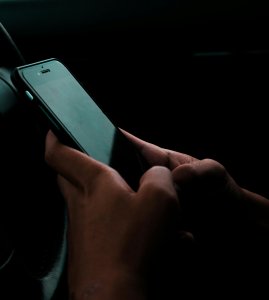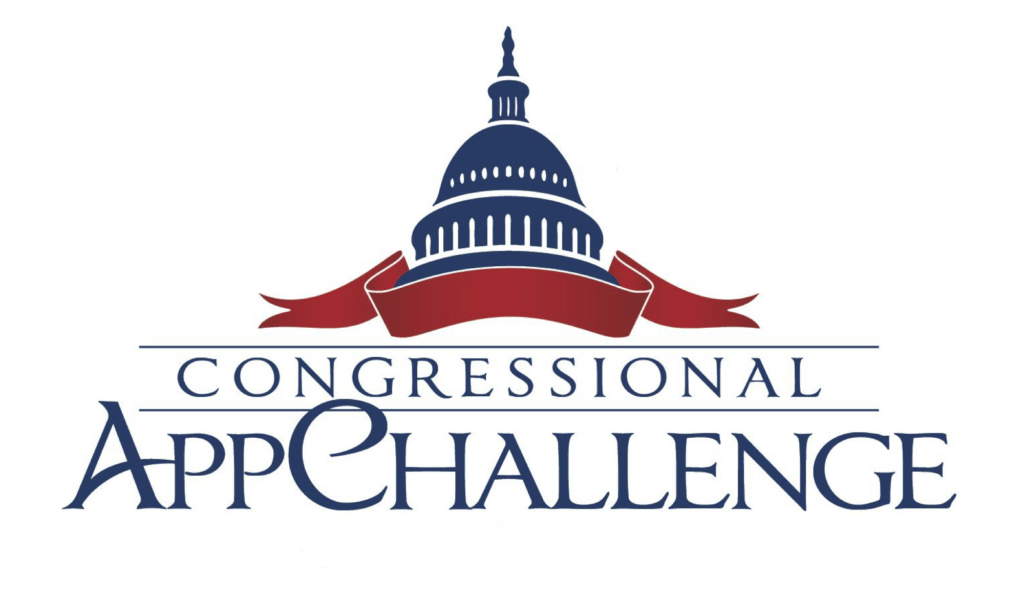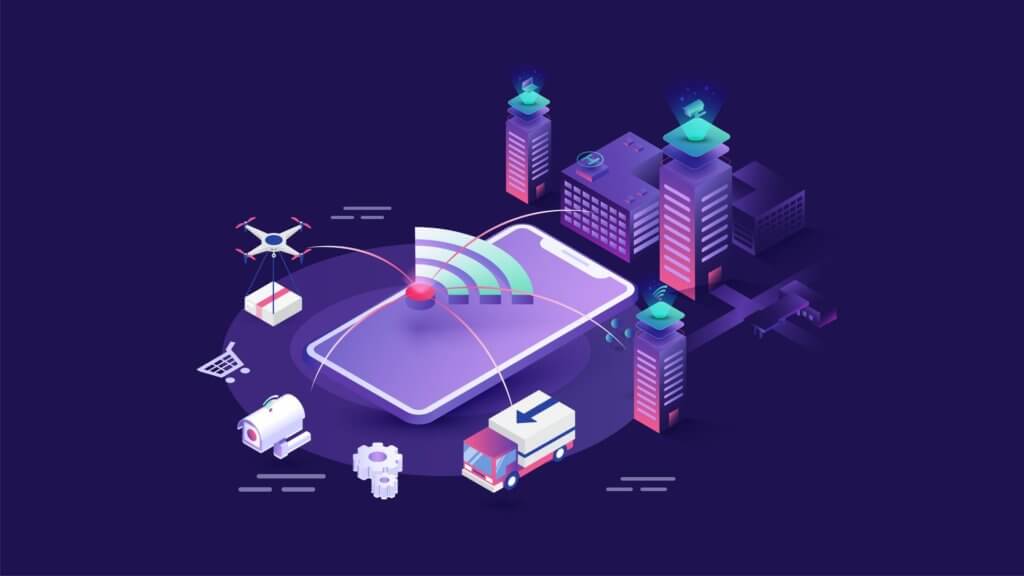Dark Mode vs. Light Mode in Mobile App Design: Finding the Right Balance
April 16, 2025 - 1 hours readAfter reading this article, you’ll:
- Dark Mode’s rise is impossible to ignore – surveys show a strong user preference (up to ~80% adoption) for darker color schemes on mobile. Business leaders should know that supporting both Dark and Light modes can enhance user satisfaction and engagement.
- Each mode offers unique pros and cons: Dark Mode can reduce eye strain in low-light settings and save battery on OLED screens, while Light Mode often provides superior readability in bright conditions and aligns with traditional design aesthetics. The best choice depends on context, user preference, and brand identity.
- Impact on engagement & retention: Offering a choice between Dark and Light modes caters to diverse user needs – boosting accessibility, comfort, and potentially increasing the time users spend in an app. Major apps have even seen increased engagement after adding Dark Mode, though usability must remain a priority in either mode.

Mobile app designers and product strategists today face a key decision: whether to design for dark mode, light mode, or both. This debate isn’t just about switching color palettes – it’s about how aesthetics, user comfort, device performance, and accessibility intersect to influence user engagement and retention. Should your app embrace a sleeker dark theme, stick to a classic light interface, or accommodate both? Let’s explore the pros and cons of Dark vs. Light Mode in mobile app design, backed by recent research and industry insights.
Understanding Dark Mode and Light Mode
Dark Mode presents light-colored text, icons, and UI elements on a dark background (typically black or gray). Light Mode (the long-standing default for most apps) displays dark text and visuals on a light background (usually white or light gray). Virtually every major platform now offers system-wide dark mode settings, and users can often toggle between the two in individual apps. This ubiquity reflects a broader trend: dark mode has surged in popularity in recent years, even though light mode remains prevalent in many contexts.
Why the rise of Dark Mode
Many users perceive dark themes as modern and visually appealing. Dark interfaces were once niche (used by coders or in specific apps), but now are mainstream across iOS, Android, and popular apps from Twitter to YouTube. A key driver is comfort: dark mode is often promoted as easier on the eyes in low-light environments and more energy-efficient on newer screens. It has essentially become an expected feature – by 2021, roughly 90% of well-known apps offered a dark theme option, and operating systems automatically support it.
Light Mode’s legacy
Light interfaces have decades of usability testing behind them and are still the default for most websites and many apps. Black text on a white background is a familiar standard due to its high contrast and readability in typical daylight conditions. Many users (especially in bright environments or older demographics) continue to favor light mode for its clarity and traditional aesthetic. In branding, light designs often convey openness and simplicity – one reason many banking, healthcare, or enterprise apps stick with a light theme.
User adoption
It’s clear that one size does not fit all. Recent statistics highlight how usage is context-dependent. A 2024 study found nearly 82% of smartphone users have dark mode enabled on their devices. Likewise, more than 70% of users regularly use dark mode on their favorite apps. On the other hand, research by the Nielsen Norman Group (a UX consultancy) noted a more even split: about one-third of users keep their phone in dark mode, one-third in light, and the rest switch based on context.
What’s consistent is the trend – demand for dark mode has grown significantly, especially among younger users and in evening usage. At the same time, light mode isn’t disappearing; it remains preferred for scenarios like outdoor use or extended reading during the day.
Given this landscape, business decision-makers should recognize that offering both modes can cater to a wider audience. The following sections break down the core considerations – from aesthetics and branding to user comfort, energy efficiency, and beyond – to help evaluate Dark vs. Light Mode for your mobile app.
Design Aesthetics and Brand Implications
How an app looks is often the first thing users notice, and the choice of dark or light theme plays a big role in aesthetic impression. Each mode has distinct visual characteristics that can either enhance or conflict with your brand’s identity and the nature of your content.
Modern vs. Traditional Feel
Dark UIs are frequently seen as sleek, modern, and even “cool.” They can impart a cutting-edge vibe to a product. For instance, music and video apps like Spotify and Netflix use permanent dark interfaces, partly to create a cinematic, immersive feel where the content stands out. Lighter interfaces, by contrast, project a clean, classic feel.
Many traditional businesses still favor light mode to convey brightness, transparency, and trustworthiness. Neither is inherently better – it depends on the message you want your UI to send. An app aimed at creatives or nighttime use might lean dark for a stylish look, whereas a productivity or finance app might choose light for a crisp, professional tone.
Highlighting Content
 Dark mode can make certain types of content pop. Visual content (photos, videos, graphs) often appears more vivid against a dark background, since the surrounding interface recedes. As Spotify’s design team noted, a dark theme lets album art and imagery take center stage while interface chrome fades into the background, similar to watching a movie in a dark theater.
Dark mode can make certain types of content pop. Visual content (photos, videos, graphs) often appears more vivid against a dark background, since the surrounding interface recedes. As Spotify’s design team noted, a dark theme lets album art and imagery take center stage while interface chrome fades into the background, similar to watching a movie in a dark theater.
Light mode, with its white or light canvas, can provide a neutral backdrop that doesn’t distract from text-heavy content. If your app is mainly about reading long articles or forms, a light background with dark text is traditionally easier on the eyes over long durations (more on readability later).
Brand Colors and Logo
Your brand’s color palette might interact differently with dark vs. light backgrounds. Some logos and iconography designed for a white background might need an alternate version for dark mode to maintain visibility and impact. For example, a dark-colored logo could get “lost” on a black background. Designing for both modes means ensuring your brand elements (logos, icons, illustrations) remain consistent and recognizable in each.
This often requires creating inverted versions or adjusting colors. The consistency of branding across modes is important – you want users to recognize your app whether they use it in dark or light mode. Many companies test their style guide in both themes to avoid any unpleasant surprises (like illegible text or clashing colors) when the mode is switched.
Aesthetic Usability Effect
There’s a psychological phenomenon where users perceive attractive designs as more usable. If a user personally likes dark mode’s look (or light mode’s), that preference can positively bias their overall impression of the app’s UX. Comments like “dark mode is way cooler and makes everything seem easier to use” are not uncommon. However, it’s critical not to rely solely on theme aesthetics to carry the user experience.
A visually beautiful dark theme won’t rescue a fundamentally poor workflow or information architecture. Usability principles – clear navigation, intuitive layouts, readable text – must be upheld in whichever mode you choose. In short, great visuals can enhance UX but can’t replace solid design fundamentals.
Bottom line (Design): Choose a theme that aligns with your brand and app context. Dark mode offers a dramatic, immersive style that can reinforce a modern or content-centric brand, whereas light mode offers a clean, time-tested canvas well-suited for clarity and professionalism. Many apps ultimately provide both, using light mode as the default and dark mode as an option, thereby combining broad appeal with stylistic flexibility. If you do support both, ensure your design system accounts for colors, logos, and assets in each variant so that the app feels cohesive either way.
User Preferences and Expectations
Understanding user preference is crucial – after all, the goal is to make users comfortable and happy using your app. So what do users actually want? As noted, surveys and usage data paint a picture of growing dark mode popularity. For example, one recent poll reported 81.9% of Android users use dark mode on their phones (with another ~9.9% switching between dark/light). Another study found over 70% of all smartphone users regularly activate dark mode when available. Users often cite reduced eye strain, a cooler look, and battery saving as reasons for their preference.
However, preferences are not monolithic across all users or contexts:
- A significant segment still sticks with light mode by choice. Nielsen Norman Group’s research found roughly 33% of users prefer light mode consistently, often because they find it easier to read, especially during daytime.
- Many users are situational – they might use light mode in daylight or at work, but switch to dark mode in the evening or in low light. In fact, usage patterns show a spike in dark mode adoption at night: after 10 p.m., about 82.7% of people have their phones in dark mode. This suggests that environment and time of day influence preference. A bright white screen that’s fine at noon could feel blinding at midnight, prompting the switch.
- Demographics and device can play a role. Younger users and tech enthusiasts tend to drive the dark mode trend (some see it as a default now), whereas some older users stick to what they’ve always used (often light mode). Likewise, OLED phone users might favor dark for battery reasons, whereas someone on an older LCD phone won’t see that benefit (and may not care either way beyond aesthetics).
Expectation of choice
 Crucially, users increasingly expect apps to offer both modes or to automatically adapt. If someone has set their phone to dark mode at the OS level, they assume your app will respect that setting. In users’ minds, dark mode is a system-wide preference – they don’t want to manually hunt for a theme switch in each app. As a best practice, mobile apps should mirror the device’s theme by default.
Crucially, users increasingly expect apps to offer both modes or to automatically adapt. If someone has set their phone to dark mode at the OS level, they assume your app will respect that setting. In users’ minds, dark mode is a system-wide preference – they don’t want to manually hunt for a theme switch in each app. As a best practice, mobile apps should mirror the device’s theme by default.
Both iOS and Android provide APIs for apps to detect the system setting and apply the corresponding theme. By doing so, you meet the user’s expectation seamlessly. (You can still offer an in-app toggle for those who want to override and choose a specific mode, but the key is sensible default behavior.)
Failing to offer a user’s preferred mode can have consequences. Users may feel that their needs are not being acknowledged. There are countless anecdotes of users complaining or even abandoning apps that lack a dark mode option when they strongly prefer it. In one discussion, a user bluntly stated that lack of dark mode was the primary reason they stopped using a particular app. Another common refrain: being confronted with a blinding white screen in a dark room can drive users away quickly (e.g., a prospective customer leaving a website or app session because it didn’t respect their device’s dark mode, as one tester did in an eye-opening experiment). In app store reviews and forums, you’ll often see comments such as “No dark mode is a dealbreaker” or requests for developers to add dark theme support. All this underscores that theme preference is a quality-of-life feature that some users hold dear.
On the flip side, if you do accommodate both preferences, you can expect user appreciation. It’s one less friction point. A recent analysis by Portent found that when they enabled a dark theme on their site for users who preferred it, engagement levels (e.g. reading completion rate) between dark-mode users and light-mode users became virtually identical. In other words, by respecting each user’s comfort choice, they provided an equally good experience to both groups. The takeaway for product strategists: you don’t necessarily gain a huge engagement boost by forcing dark or light universally – you gain it by giving users control or auto-adapting to their preference, ensuring no one is alienated.
Bottom line (User Preference): The safest approach is to offer flexibility. Users increasingly expect to toggle between dark and light, or have the app follow the system setting. By doing so, you cater to a broad spectrum of preferences and contexts – night and day, young and old, power users and casual users alike. This can improve user satisfaction and prevent potential churn due to something as avoidable as a theme mismatch. If resources allow, supporting both modes is generally a wise choice in today’s market. Just be sure to get the details right in each mode, as we’ll cover next.
Energy Efficiency: Battery Life Implications
One of the tangible, technical advantages often touted for Dark Mode is its potential to save battery life on smartphones – a very practical concern for mobile users and thus an important factor for product teams to consider.
The battery benefit of dark mode comes down to display technology. Most modern high-end phones use OLED (Organic Light-Emitting Diode) screens. Unlike older LCD screens, OLED displays light up each pixel individually: pixels showing black or very dark colors draw significantly less power (in fact, a pure black pixel is essentially off). Light mode, which displays large white areas, requires many pixels to be at full brightness, consuming more energy. Dark mode interfaces, with more black and dark regions, let those pixels stay dim or off.
How big is the effect? It depends – primarily on screen brightness and how your app’s UI is composed:
- In an extreme scenario, with the screen at 100% brightness, dark mode can slash power usage. A Purdue University study found an average 67% reduction in power consumption at max brightness when switching from light to dark mode. This is a huge difference, essentially meaning if a user runs your app at full brightness, dark mode could more than double their battery life for that session. This finding has been echoed by tests on popular apps: running apps like YouTube or Google Maps in dark mode at max brightness saved between 40-60% of the display’s battery draw.
- However, at more moderate brightness levels (which are more common), the savings are less dramatic. The same Purdue study noted that at 30% screen brightness, dark mode yielded only about 14% power savings on average. Another analysis found negligible savings (around 3-9%) when comparing modes at low to mid brightness settings. In normal indoor use, many users have their screens around 30-50% brightness, so dark mode alone won’t make your app battery-neutral – but it still offers some efficiency gain.
- If a user enables their phone’s auto-brightness or uses it outdoors, brightness can ramp up, and the dark mode benefit grows accordingly. Also, as phones age, users often increase brightness to compensate for dimming displays or eyesight, which again makes dark mode more advantageous for battery.
- The content of your app matters. Dark mode saves power mostly on the UI chrome (navigation bars, backgrounds, menus). If your app displays a lot of images, videos, or bright advertisements, those will still drain power similarly in both modes. Apps that are mostly text and interface (like messaging, email, settings screens) can realize bigger battery gains from a dark theme than apps that are media-heavy (where much of the screen isn’t affected by the theme). For example, an e-reader app with a pure black background and white text is ideal for OLED efficiency, whereas an app showing full-screen photos won’t change power use much whether its surrounding UI is dark or light.
It’s worth noting that on LCD screens (still used in some budget phones and tablets), dark mode doesn’t save battery – the backlight is on regardless, and in fact in some cases displaying all black could use slightly more power due to how LCD shutters work. But as of 2023, roughly half of smartphones produced use OLED, including all flagship devices. This share is only growing, meaning dark mode’s battery advantages will impact more of your user base over time.
For business stakeholders, the takeaway is that dark mode can be a selling point for power users: it allows your app to be more considerate of battery life. Heavy users who spend long sessions in your app (think of someone doom-scrolling a social feed or working in a productivity app for hours) will appreciate that a dark theme extends their battery longevity. In marketing terms, being “battery-friendly” is a small competitive advantage that can differentiate you, especially if your app is known to be battery-intensive in light mode.
Also consider hardware trends: Devices like the Apple Watch default to dark UI for battery reasons, and as more devices (foldables, in-car displays, AR/VR headsets) use OLED or similar tech, designing with power in mind is forward-thinking.
Of course, battery life alone might not justify a design decision that doesn’t suit your app, but it’s a nice bonus benefit if you do implement dark mode. If you decide to promote this angle, be sure not to overclaim – the difference can be huge at full brightness, but many users won’t see a 50% boost in everyday use. It’s safer to say something like “Dark mode can help save battery on devices with OLED screens” and perhaps cite that at max brightness it’s very effective and still provides moderate gains at normal settings.
Bottom line (Battery): Dark mode is generally a plus for energy efficiency on modern phones, especially in bright display conditions. While not every user will notice the difference, those who care about squeezing more hours out of their battery may actively prefer apps that offer a dark theme. From a product standpoint, supporting dark mode aligns with the broader push for optimization and efficiency in mobile experiences. It’s one more way to show you value your users’ overall device experience, not just the time spent in your app.
Accessibility and Usability Considerations
One of the most important angles in the dark vs. light debate is how each mode affects accessibility and general usability. Different users have different needs, and a theme that is comfortable for one person might pose challenges for another. Here, we look at factors like eye strain, readability, and specific visual impairments:
Eye Strain and Visual Comfort
A major reason many people cite for using dark mode is reduced eye strain, especially in dim environments. A dark background emits less overall light into your eyes, which can feel gentler at night or in low light. Think of the experience of looking at a bright white screen in a dark room – it can be jarring (as the anecdote earlier illustrated). Dark mode’s muted luminance can minimize that blinding effect and also reduce blue light exposure by a significant amount (some estimates say around 70% less blue light). This potentially helps with evening use by not disrupting sleep patterns as much, though the science on blue light and sleep is still evolving.
However, research on eye strain isn’t unanimous in declaring dark mode a cure-all. A controlled study found no significant difference in reported eye fatigue between light and dark modes in typical reading tasks. Another experiment in a VR setting showed dark mode only slightly reduced eye fatigue compared to a dimmed light mode, and mainly when the surrounding environment was also dark. The key factors for eye comfort seem to be overall brightness and contrast relative to your environment.
In a dark environment, a dark mode with appropriately bright text can indeed be a relief. In a bright environment, a light mode might actually be easier on the eyes because the screen’s brightness matches ambient light. Conclusion: dark mode helps in dark settings; light mode helps in bright settings. Neither completely eliminates eye strain on its own – taking breaks, adjusting ambient lighting, and using comfortable font sizes are also important.
Readability and Contrast
When it comes to reading speed and comprehension, studies tend to favor light mode (dark-on-light text) as slightly better for long-form content and sustained reading . Black text on a white background yields high contrast and has been the default for print for centuries. Our visual system is well adapted to dark-on-light for perceiving fine details in text. Dark mode (light text on dark) is sometimes called “reverse contrast” or negative polarity.
Some users report that white text on black can cause a “halo” effect – the text seems to bleed or blur slightly. This is especially true if the text is very bright and the font thin. One reason is that pupils dilate more when viewing a dark screen (because overall light is less), and a more dilated pupil can reduce visual acuity a bit, making text edges less sharp for some people.
The difference in readability is usually small, and many UI designers mitigate it by avoiding pure black backgrounds and pure white text. Instead, dark gray backgrounds with off-white text can reduce the harsh contrast to more comfortable levels, improving readability. Typography choices (font weight, size, line spacing) also matter more in dark mode to maintain legibility. In short, light mode might have a slight edge for reading lengthy content during the day, while dark mode is perfectly fine for shorter bursts or when reading in the dark.
Users with Visual Impairments
Accessibility isn’t one-size-fits-all. While dark mode is often listed as an “accessibility feature” for those with certain vision issues, it can actually be a hindrance for others. For example:
- Cataracts & Photophobia: People with cataracts or sensitivity to bright light often prefer dark backgrounds. Cataracts can cause glare and make focusing hard when there’s a lot of light. For these users, dark mode reduces the amount of light that scatters in the eye, potentially making text easier to focus on. It’s no surprise many accessibility guidelines suggest providing a dark theme for those who need it.
- Astigmatism: On the other hand, roughly 47% of people have some degree of astigmatism (an eye condition causing blurred vision). For many of them, light text on dark backgrounds can be harder to read. The phenomenon of halation occurs, where the strokes of light-colored text appear to spread or glow against the dark background, due to slight distortions in the eye. Essentially, the contrast polarity inversion plus a dilated pupil can make focusing more difficult for astigmatic eyes. Such users often do better with dark text on a light background (positive polarity).
- Dyslexia: Users with dyslexia can also have trouble with extreme contrasts. Pure black-and-white text (in either polarity) may reduce readability for some dyslexic readers. Many people with dyslexia report that a softer contrast (like dark gray on light gray, or vice versa) is easier to read. If your app implements dark mode, you need to be mindful not to create overly harsh contrast that could trigger this issue. Sometimes a slightly lighter background and slightly dimmer text in dark mode can help. Likewise, providing user options for adjusting contrast or using reader modes can assist those users.
- General contrast standards: Whichever mode you design, ensure you meet accessibility contrast guidelines (WCAG recommends at least 4.5:1 contrast ratio for text). It’s actually easy to accidentally fail contrast compliance in dark mode if you choose trendy low-contrast colors (e.g., using medium gray text on a dark gray background for a “soft” look – that might be too low contrast for some users to discern). Always test your color scheme with contrast checkers. Similarly, in light mode, light gray text on white can be an issue. Both themes require thoughtful color choices to be truly accessible.
Cognitive and Other Considerations
Some research suggests interface familiarity can affect perceived usability. Since light mode has been the default for so long, some users (especially less tech-savvy ones) might find a dark interface disorienting or associate it with “night mode” only. It can also impact how content is perceived emotionally – a banking app entirely in dark mode might feel odd or “insecure” to some because we subconsciously associate dark UIs with entertainment or developer tools, while light UIs feel business-like.
These are subtle effects but worth noting depending on your target user. The safest route is to allow the user to make the choice. Also, for users with certain cognitive differences, consistency is key – flipping an interface to an unfamiliar theme might confuse them. So if you detect a system preference, it’s kind to follow it, as mentioned earlier, to maintain a consistent experience with the rest of their device usage.
Bottom line (Accessibility & Usability)
Supporting both dark and light modes is ultimately about inclusivity. Each mode can improve usability for certain people or contexts and worsen it for others. By offering both, and letting the user or system decide which to use, you maximize the chances that each user can experience your app in the way that’s most comfortable for them. Importantly, implement both modes with equal care: test your app’s usability in dark mode and light mode thoroughly.
Check that all text is readable, all controls are visible, and that no critical information is lost due to color changes (for example, some icons or images might need adaptation for dark backgrounds). When done right, both modes can be equally intuitive and accessible, allowing your app to deliver a great experience in the broadest range of conditions – whether it’s a sunny day in the park or a late-night session in a dim bedroom.
Impact on User Engagement and Retention
From a business perspective, one of the ultimate questions is: How do dark vs. light modes affect user engagement with the app and their likelihood to keep using it (retention)? It’s rare that a color scheme alone will make or break an app’s success, but it can certainly influence user behavior and satisfaction, which in turn impact metrics like session length, frequency of use, and churn.
Engagement refers to how much and how deeply users interact with your app – e.g. time spent, screens viewed, actions taken per session. Retention refers to users continuing to come back over time (e.g. Day 7 or Month 1 retention rates).
Here’s how theme choice can come into play:
Reducing friction and fatigue
An interface that aligns with user comfort can encourage longer sessions. If users aren’t squinting or feeling uncomfortable due to brightness or low contrast, they may linger longer and use your app in more situations.
For example, an e-reader or social media app with a well-implemented dark mode might see users spending extra time reading at night compared to an app that forces a bright screen (where the user might quit sooner due to eye fatigue or not wanting to disturb a partner in a dark room). By the same token, an app that works well in bright daylight (good light mode) will keep users engaged during their morning commute or outdoor use. Optimizing for both scenarios means your app is accessible for engagement 24/7.
User satisfaction and loyalty
Offering dark mode can signal to users that you are listening to modern user expectations and care about their experience. It’s a small but meaningful feature for many. When apps add dark mode, they often get positive feedback. In fact, leading apps like WhatsApp, Skype, and Twitter saw increased user engagement after rolling out dark mode and similar accessibility-oriented features. Part of this could be positive press and goodwill; part could be actual increased usage by those who were waiting for such features. Satisfied users are more likely to become repeat users and advocates for your app. In the competitive app market, details like theme options can even sway App Store ratings and reviews, which influence new user acquisition.
Re-engagement at different times
Dark mode might enable more nighttime usage, which can boost overall engagement numbers. If your app’s analytics show a drop-off in usage after a certain evening hour, introducing a dark theme could remove a barrier for night owls. Some product managers tie the availability of dark mode to increases in metrics like average session duration or late-hour login frequency.
There’s also a marketing angle: a “New Dark Mode Available!” announcement can prompt lapsed users to reopen the app out of curiosity, giving you an opportunity to re-engage them with other new content or features once they’re back.
Retention and preference matching
Retention is closely tied to whether users feel an app fits well into their life. If a significant portion of your target users strongly prefer dark mode (as the stats suggest, many do), not having that option could be a reason – even if a minor one – for them to eventually drift to a competitor that does cater to their preference. This is especially true if your competitors already have a dark theme; you don’t want to be the odd one out.
On the flip side, if you implement dark mode thoughtfully, you remove one reason a user might have to leave. An accessible app is often a stickier app. There’s evidence that apps focusing on inclusive design (including theme flexibility) achieve higher retention rates than those that don’t. The logic is simple: users are diverse, and an app that adapts to user needs keeps more of them around.
No magic bullet, but part of a bigger picture
It’s important to note that simply adding a dark mode won’t suddenly double your engagement. It’s one component of overall UX. If your app is fundamentally useful and well-designed, theme support enhances it; if your app has deeper issues, dark mode alone won’t save retention. That said, when planning features, catering to user comfort is low-hanging fruit that complements other retention strategies (like personalized content, notifications, rewards, etc.). Think of dark mode as part of the customer experience strategy – by removing a potential annoyance and adding a delight factor, you strengthen the relationship between the user and the app.
Data and feedback driven decisions
If you’re on the fence about the impact, consider running A/B tests or surveys. You might enable dark mode for a segment of users and compare their engagement metrics to a control group. Or simply ask your users – often, power users will directly request features like this. As one of Dogtown Media’s analytics-focused articles suggests, listen to user feedback and leverage data to prioritize features that matter. If a new expectation like dark mode emerges and your data/feedback indicate it’s important to your audience, that’s a strong signal to invest in it.
To illustrate, a web design agency found that websites offering a dark theme saw a 43% increase in user engagement on those sites. While that figure may vary by context and shouldn’t be generalized blindly, it underscores that a more comfortable viewing mode can encourage users to interact more. Conversely, the absence of a preferred mode can cause friction – as we saw in user comments, some will simply use an app less or leave because it doesn’t cater to their visual comfort.
Bottom line (Engagement & Retention): Supporting dark and light modes is fundamentally about removing barriers to use. The easier and more pleasant it is for users to engage with your app whenever they want, the more they will do so. Dark mode in particular has become a quality expectation for many users; providing it can prevent losing users who might otherwise churn due to discomfort or preference. It’s a relatively low-cost feature (in terms of tech effort) that can yield high customer satisfaction – a clear win for long-term engagement. Just remember, the goal is to let users engage on their terms (light when it’s better for them, dark when it’s better for them), thereby maximizing overall usage and loyalty.
Dark Mode vs. Light Mode: Comparison Table
For a quick overview, here’s a side-by-side comparison of Dark and Light modes across key dimensions:
| Aspect | Dark Mode | Light Mode |
| Design Aesthetics | Modern, sleek, and often viewed as innovative. Can make visual content (photos, videos, graphs) stand out against the UI. Common in media, entertainment, and developer-focused apps. Brands using dark mode convey a tech-savvy or immersive identity. Potential con: If overused, can feel heavy or moody for certain brands. | Clean, classic, and traditionally professional. Black text on white gives a neutral canvas for most content types. Common in productivity, finance, and enterprise apps. Conveys simplicity and trust (e.g., lots of white space = openness). Potential con: Can appear plain or generic if not designed with care. |
| User Preference | Highly popular for many users, especially in low-light environments or among younger demographics. Roughly 70–80% of mobile users now use dark mode at least some of the time. Often requested as a feature if not present. Best received when it respects system settings automatically. However, a subset of users will avoid dark mode due to personal preference or readability issues. | The long-time default that many are accustomed to. Still preferred by a significant portion (e.g., ~33% keep light mode all the time, and many switch to it in bright settings). Older users and those in bright environments often favor light mode. Generally no learning curve – users expect it by default. Con: Can cause dissatisfaction among those who strongly prefer dark mode, if no dark option is available. |
| Readability & Usability | Excellent for low-light use and short-form content. Reduces glare at night, which can lessen immediate eye strain. Users with light sensitivity often find it more comfortable. Requires careful design to maintain contrast (e.g., light text on dark must be high contrast to be legible). Some users (astigmatism, dyslexia) may find light-on-dark text harder to read. For prolonged reading or detail-heavy tasks, dark mode can be slightly less efficient for the average user. | Excellent for bright-light use and long-form reading. Black-on-white text is usually easier to read for extended periods and in sunlight or well-lit rooms. Provides high inherent contrast (if designed with black/near-black text). Familiar UX patterns mostly evolved on light backgrounds, contributing to intuitive use. Con: In dark environments, a light interface can cause eye strain or discomfort, and may even deter use (users might close the app if it’s uncomfortably bright). Also, apps heavy on light mode can drain battery on OLED devices. |
| Battery Efficiency (on OLED screens) | Generally battery-friendly on OLED devices. Can significantly extend battery life in high-brightness scenarios – up to ~60% power savings at 100% screen brightness. At moderate brightness, offers modest improvements (~10-15% savings). Particularly beneficial for heavy usage or AMOLED displays. No benefit on LCD screens (no impact or negligible). | Typically uses more battery on OLED devices, since much of the screen is lit. In power-sensitive scenarios, light mode can drain battery faster (e.g., a mostly-white UI at max brightness uses far more energy than the same in dark mode). On LCD screens, no major difference (light mode is standard and the backlight is always on). Battery impact can be mitigated by using system dark mode at the OS level even if app is light (some OS might invert for you, but not always reliably). |
| Accessibility | Helps certain vision impairments: for example, users with cataracts or who suffer migraines from bright light often require dark themes to use an app comfortably. Can also reduce blue light, which some users find beneficial. Needs high contrast text/icons to be accessible. May hinder users with astigmatism or dyslexia if not adjustable. Ideally offered as an option to accommodate those who need it, but not forced on everyone. | Helps other user groups: many low-vision users actually prefer high-contrast light mode (dark text on light) for clarity. If designed with scalable fonts and proper contrast, light mode meets accessibility needs for a broad population. However, for users with extreme light sensitivity or those browsing in darkness, a light-only design can exclude or discomfort them. Offering only light mode might violate certain accessibility expectations if users cannot invert colors easily. |
Note: The best approach for accessibility is to let the user choose or follow their system preference. As one expert advice puts it, do not enforce either mode for everyone – respect the user’s own setting for an optimal experience.
FAQs: Dark Mode vs. Light Mode in Mobile Apps
Q: Should our app support both dark and light modes?
A: In most cases, yes – supporting both is recommended. Providing both themes allows users to select what’s most comfortable for them, which can increase overall satisfaction. Many modern apps either follow the device’s setting or offer a manual toggle. Unless your app has a compelling reason to be only one mode (e.g. a game or media app with a specific artistic style), it’s wise to accommodate both. Notably, both Apple’s and Google’s design guidelines encourage offering dark mode compatibility. Supporting only one mode could alienate a chunk of users who prefer the other, so to maximize your audience and demonstrate UX thoughtfulness, plan for both.
Q: Does dark mode automatically make an app more user-friendly?
A: Not automatically – it depends on the context. Dark mode can make an app more user-friendly for someone using it in a dark environment or for someone who simply loves the dark aesthetic. It can reduce eye strain at night and save battery on OLED phones, which those users will perceive as improvements.
However, for someone sitting in the sun or who has difficulty reading light-on-dark text, dark mode could be less user-friendly than light mode. The key is offering the choice. A well-implemented dark mode enhances usability by providing comfort in low light, but it doesn’t replace the need for good design. It should be seen as one tool in your UX toolkit, complementing things like clear navigation, readable fonts, and proper contrast.
Q: How does dark mode affect app development and design effort?
A: Implementing a second theme does require some up-front effort. Designers will need to adapt the color palette and possibly certain icons/illustrations for a dark background (e.g., turning a black logo to white, adjusting shadow effects, etc.). Developers need to ensure styles switch correctly and that both modes are tested. There’s also QA overhead – you must test your screens in both themes to catch any issues (like a piece of text that became illegible or an image with a white background that looks odd in dark mode).
That said, both iOS and Android provide frameworks to make supporting dark mode easier (Android’s DayNight theme, iOS’s trait collections, etc.). Many design systems now build dark mode in from the start. So while it’s some extra work, it’s not double the work of an app – often much of your layout and components remain the same, just with different colors. The maintenance is also manageable: developers can typically tie new UI elements to theme-aware colors, and it scales. The effort is usually justified by the broader user reach and goodwill it creates.
Q: Will offering a dark mode improve our app’s engagement metrics?
A: It can, indirectly. Simply adding a dark theme won’t guarantee a spike in usage for all users, but it will make a segment of users happier and more comfortable using your app in more situations. This can translate to longer sessions (e.g., people staying on your app at night rather than closing it due to brightness) and possibly more frequent usage (since the app is pleasant to use both day and night). There have been cases where introducing dark mode corresponded with upticks in user engagement, especially among users who had been eagerly awaiting it. It’s also linked to accessibility – an app that’s comfortable is one a user is likely to return to often. At the very least, having dark mode removes a potential reason for users to drop off. If a portion of your users were avoiding using the app in certain settings due to the theme, you’re eliminating that friction. Over time, that can lead to better retention. So, consider dark mode as an investment in user experience that may yield improved metrics as a positive side effect, rather than a direct growth hack.
Q: Which mode should be the default for our app?
A: The best practice is to default to the user’s device setting. That is, if their phone is in dark mode globally, start your app in dark mode; if it’s in light, start in light. This respects what the user has already chosen at the system level (many users set this once and expect apps to follow suit). Both iOS and Android have APIs to detect this “prefers dark mode” setting. By doing this, you essentially have no “wrong” default – you’re mirroring their preference. If, for some reason, you must pick a single default (perhaps your app has a unique sign-in flow or initial experience), consider your target audience and primary use case:
- If your app is likely to be used primarily at night or is aimed at tech-savvy users, you might lean towards dark by default.
- If it’s more general audience or daytime utility, light is a safer default. Ultimately, offering an easy toggle in settings is important so the user can immediately switch if they want. And remember, consistency matters: if your marketing site or other platform presence is in one mode, the app can feel more aligned if it initially matches that, but this is a minor concern compared to user preference.
Q: Are there any downsides to supporting dark mode we should consider?
A: Aside from the development/design effort mentioned, a potential downside is that if not done well, a dark theme could introduce usability issues. For instance, if your team is inexperienced with dark UI design, they might choose colors that don’t have enough contrast, leading to poor readability (a common issue with newbie dark themes). Or they might overlook how certain components look in dark mode (e.g., an SVG icon that’s black might vanish on a black background).
These issues can be overcome with thorough design guidelines and testing – just don’t treat dark mode as an afterthought; give it proper attention. Another downside to consider is brand perception: if your brand identity is tied to a very light, airy look, a dark mode might feel off-brand to some extent. But usually, this is solved by designing a branded dark theme (you can maintain your brand accent colors, etc., just on dark surfaces).
Some companies choose not to include dark mode purely to maintain a singular brand aesthetic (rare, but it happens). Finally, there’s the analytics aspect: you may need to track user theme preference to fully understand usage patterns, which is minor but adds a dimension to your data analysis (e.g., you might segment feedback by theme if you discover differences). In summary, the downsides are modest and mostly about execution; with careful implementation, the benefits for users outweigh these concerns.
Q: How do we handle our app’s branding and colors in dark mode?
A: The goal in dark mode is to preserve your brand’s identity while adapting to a different background. Typically, this means you invert or adjust colors. Here are some tips:
- Convert any pure white backgrounds to dark charcoal or black. Avoid pure #000000 black if possible; many apps use a dark gray (e.g., #121212, a common Android default) to avoid extreme contrast.
- Lighten any dark-colored text or icons to a light tone. Often #FFFFFF (white) is used for main text on dark, but secondary text might be a gray (e.g., #BBBBBB) to create a hierarchy.
- Keep accent colors consistent between modes where feasible. For example, if your brand color is a vibrant blue used for buttons and links, that blue can likely remain the same in dark mode. Just check its contrast on dark backgrounds; you might need to tweak its brightness.
- If your logo is dark and normally on a white screen, provide a light variant of the logo on dark screens. Many brands have both a “light version” and “dark version” of their logo for this purpose.
- Maintain emotional tone: if your light mode uses a lot of friendly bright colors, your dark mode can incorporate richer versions of those colors against the dark background so it still feels “on brand.” For instance, a banking app that’s blue and white might use blue and dark navy in dark mode.
- Test images or illustrations: Sometimes an illustration might have a white backdrop or outline that looks odd in dark mode. You may need alternative assets (or use PNGs with transparent backgrounds) for dark mode.
By planning ahead in your style guide for both light and dark variants of each element, you can ensure consistency. Many design systems now include a “dark theme style guide” as part of their documentation. And remember to communicate to users – some companies even mention in release notes or onboarding that “This app supports dark mode – switch in settings or set to follow your system.” This highlights that you’ve put thought into it. Overall, handle dark mode as an extension of your brand, not a separate brand. Consistency and accessibility are key.









